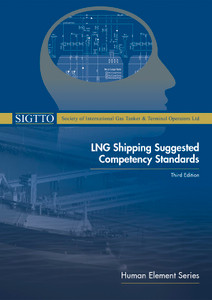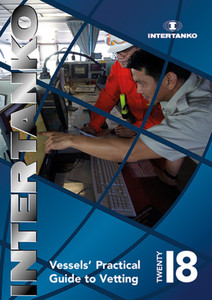
The third edition of the Guide to Ship Sanitation presents the public health significance of ships in terms of disease and highlights the importance of applying appropriate control measures. It is intended to be a basis for the development of national approaches to controlling the hazards, providing a framework for policy-making and local decision-making.
The guide may also be used as a reference for regulators, ship operators and ship builders as well as for assessing the potential health impact of projects the design of ships.
Foreword
Historically, ships have played a significant role in the global transmission of infectious disease. Some of the earliest recorded evidence of attempts to control human disease transmission via ships dates to the 14th century, when ports denied access to ships suspected of carrying the plague. In the 19th century, the spread of cholera pandemics was thought to have been facilitated by merchant shipping. A World Health Organization (WHO) review identified more than 100 disease outbreaks associated with ships between 1970 and 2003 (Rooney et al., 2004).
Today’s world fleet of propelled seagoing merchant ships of more than 100 billion tonnes comprises 99 741 ships, with an average age of 22 years, registered in more than 150 nations and crewed by more than a million seafarers of virtually every nationality (IHS Fairplay, 2010). World seaborne trade figures suggest that the amount of goods loaded on ships has increased considerably in recent decades; in 2007, it reached 7.3 billion tonnes, a volume increase of 4.8% over the previous year (United Nations, 2008). During the three decades to 2008, the annual average growth rate of world seaborne trade was estimated at 3.1% (United Nations, 2008). The shipping industry also supports tourism and recreation. American cruise ships alone carried 13.4 million people during 2009, for an average period of 7.3 days per person, a passenger number increase averaging 4.7% per year over the preceding four years (Cruise Lines International Association, 2010). Naval ships also carry considerable numbers of crew, sometimes more than 5000 per ship. Ferries are ubiquitous around the world in port cities and at some river crossings and are used by many people on a daily basis.
Because of the international nature of ship transport, international regulations relating to sanitary aspects of ship transport have been in place for more than half a century. The International Sanitary Regulations of 1951 were replaced by the International Health Regulations (IHR) adopted by WHO in 1969. The IHR were revised at the Fifty-eighth World Health Assembly in 2005.
The WHO Guide to ship sanitation has become the official WHO global reference on health requirements for ship construction and operation. Its original purpose was to standardize the sanitary measures taken in ships, to safeguard the health of travellers and workers and to prevent the spread of infection from one country to another. Today, however, given the number of specific guidance documents, conventions and regulations currently available that provide full accounts of the design and operational detail relating to ships, the primary aim of the guide is to present the public health significance of ships in terms of disease and to highlight the importance of applying appropriate control measures.
The guide was first published in 1967 and amended in 1987. This revised third edition of the guide has been prepared to reflect the changes in construction, design and size of ships since the 1960s and the existence of new diseases (e.g. legionellosis) that were not foreseen when the 1967 guide was published.
The guide has been developed through an iterative series of drafting and peer-review steps. In revising the guide, expert meetings were held in Miami, United States of America (USA), on 3–4 October 2001 and in Vancouver, Canada, on 8–10 October 2002 to discuss and recommend the proposed contents. Expert meetings to review the draft guide were held on 25 October 2007 in Montreal, Canada, and on 12–13 October 2009 in Lyon, France. Participants represented cruise ship operators, seafarer associations, collaborating member states for the IHR 2005, port state control, port health authorities and other regulatory agencies. A complete list of contributors to the guide can be found in the Acknowledgements section.
The Guide to ship sanitation and the International medical guide for ships (WHO, 2007) are companion volumes oriented towards preventive health and curative health, respectively, on board ships.
Contents
Foreword
Acknowledgements
Acronyms and abbreviations
1 Introduction
1.1 Significance of ships to health
1.2 Scope, purpose and objective
1.3 Harmonization with other international regulations
1.3.1 International Health Regulations
1.3.2 International Labour Organization
1.3.3 International Maritime Organization
1.4 Roles and responsibilities
1.4.1 Designer/constructor
1.4.2 Owner/operator
1.4.3 Master/crew
1.4.4 Port authorities
1.5 Structure of the Guide to ship sanitation
2 Water
2.1 Background
2.1.1 Standards related to potable water
2.1.2 Role of the International Health Regulations (2005)
2.1.3 Potable water sources from ashore and uses on board ships
2.1.4 Health risks associated with potable water on ships
2.1.5 Bottled water and ice
2.1.6 Definitions, overview and objectives of water safety plans
2.2 Guidelines
2.2.1 Guideline 2.1: Water safety plan for shore supplies,
delivery system and bunker boats or barges
2.2.2 Guideline 2.2: Water quantity
2.2.3 Guideline 2.3: Water safety plan for ship water supply
2.2.4 Guideline 2.4: Independent surveillance
3 Food
3.1 Background
3.1.1 Food supply and transfer chain
3.1.2 Health risks associated with food on ships
3.1.3 International Health Regulations (2005)
3.1.4 Overview of food safety plans, and hazard analysis and critical control points
3.2 Guidelines
3.2.1 Guideline 3.1: Food safety plans
3.2.2 Guideline 3.2: Food receipt
3.2.3 Guideline 3.3: Equipment and utensils
3.2.4 Guideline 3.4: Materials
3.2.5 Guideline 3.5: Facilities
3.2.6 Guideline 3.6: Storage, preparation and service spaces
3.2.7 Guideline 3.7: Toilet and personal hygiene facilities
3.2.8 Guideline 3.8: Dishwashing
3.2.9 Guideline 3.9: Safe food storage
3.2.10 Guideline 3.10: Maintenance, cleaning and disinfection
3.2.11 Guideline 3.11: Personal hygiene
3.2.12 Guideline 3.12: Training
3.2.13 Guideline 3.13: Food wastes
4 Recreational water environments
4.1 Background
4.1.1 Health risks associated with recreational water environments on ships
4.1.2 Recreational water environment guidelines
4.2 Guidelines
4.2.1 Guideline 4.1: Design and operation
4.2.2 Guideline 4.2: Pool hygiene
4.2.3 Guideline 4.3: Monitoring
5 Ballast water
5.1 Background
5.1.1 Health risks associated with ballast water on ships
5.1.2 Standards
5.2 Guidelines
5.2.1 Guideline 5.1: Ballast water management
5.2.2 Guideline 5.2: Ballast water treatment and disposal
6 Waste management and disposal
6.1 Background
6.1.1 Health risks associated with wastes on ships
6.1.2 Standards
6.2 Guidelines
6.2.1 Guideline 6.1: Sewage and greywater management
6.2.2 Guideline 6.2: Solid waste management
6.2.3 Guideline 6.3: Health-care and pharmaceutical waste management
7 Vector and reservoir control
7.1 Background
7.1.1 Health risks associated with vectors on ships
7.1.2 Standards
7.2 Guidelines
7.2.1 Guideline 7.1: Insect vector control
7.2.2 Guideline 7.2: Rodent vector control
8 Controlling infectious diseases in the environment
8.1 Background
8.1.1 Health risks associated with persistent infectious agents on ships
8.2 Guidelines
8.2.1 Guideline 8.1: Transmission routes
8.2.2 Guideline 8.2: Air quality
8.2.3 Guideline 8.3: Cases and outbreaks
Annex
Examples of hazards, control measures, monitoring procedures and corrective actions for the ship water supply system
Glossary
References
As a specialised agency of the United Nations, the International Maritime Organization (IMO) is the global standard-setting authority for the safety, security and environmental performance of international shipping. Its main role is to create a regulatory framework for the shipping industry that is fair and effective, universally adopted and universally implemented.
In other words, its role is to create a level playing field so that ship operators cannot address their financial issues by simply cutting corners and compromising on safety, security and environmental performance. This approach also encourages innovation and efficiency.
Shipping is a truly international industry, and it can only operate effectively if the regulations and standards are themselves agreed, adopted and implemented on an international basis. And IMO is the forum at which this process takes place.
- Number of Pages:
- 171
- Published Date:
- April 2011
- Book Height:
- 295 mm
- Book Width:
- 210 mm
- Author:
IMO
- Preview:
- Yes
- Publication Date:
- April 2011






